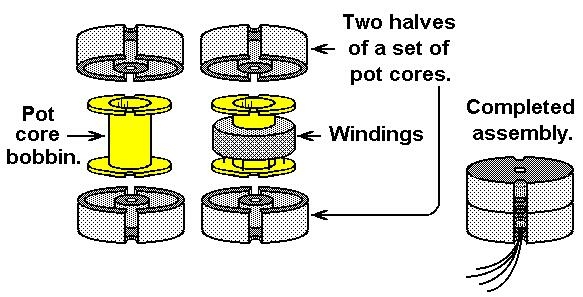source: EDN article
Pot Cores, John Dunn -July 29, 2016
Ferrite pot core transformers are constructed along the lines of the following sketch.

We are told that this kind of core is extremely effective at confining the magnetic fields of the transformer windings to within the confines of the core itself and conversely, that this kind of ferrite core is very good at protecting the transformer windings from outside impinging magnetic fields. While it’s true that in some cases, supplementary magnetic shields are added around the outside of the pot core halves to get even better confinement and protection, these things really do have good EMI characteristics.
However, although this kind of transformer has its virtues, it is NOT perfect. There is still some magnetic vulnerability. Having had to run some tests for that vulnerability for a particular product, we now look at some test results from that experience and at the implications of those test results.
What was done is shown in the following sketches for a unit under test (UUT) within which an array of shielded pot core transformers was mounted on a circuit board such that each core’s axis was in the same direction as all of the others.
A test winding of ten turns (I’m working from memory at this point.) was placed around the UUT’s case in each of three different directions and a 400 Hz current was made to flow through that winding thus generating three different impinging 400 Hz magnetic fields.
The worst vulnerability was seen with the test winding positioned on the same axis as the pot cores.

Less severe vulnerabilities were seen for the test winding being oriented orthogonally to the axis of the pot cores.

The cautionary tale of all of this is that depending on the direction of the external test coil, there was a 17 dB difference between the highest and lowest 400 Hz currents that could disable the UUT.
As good as these pot core transformers may be, the unwary can be surprised.































